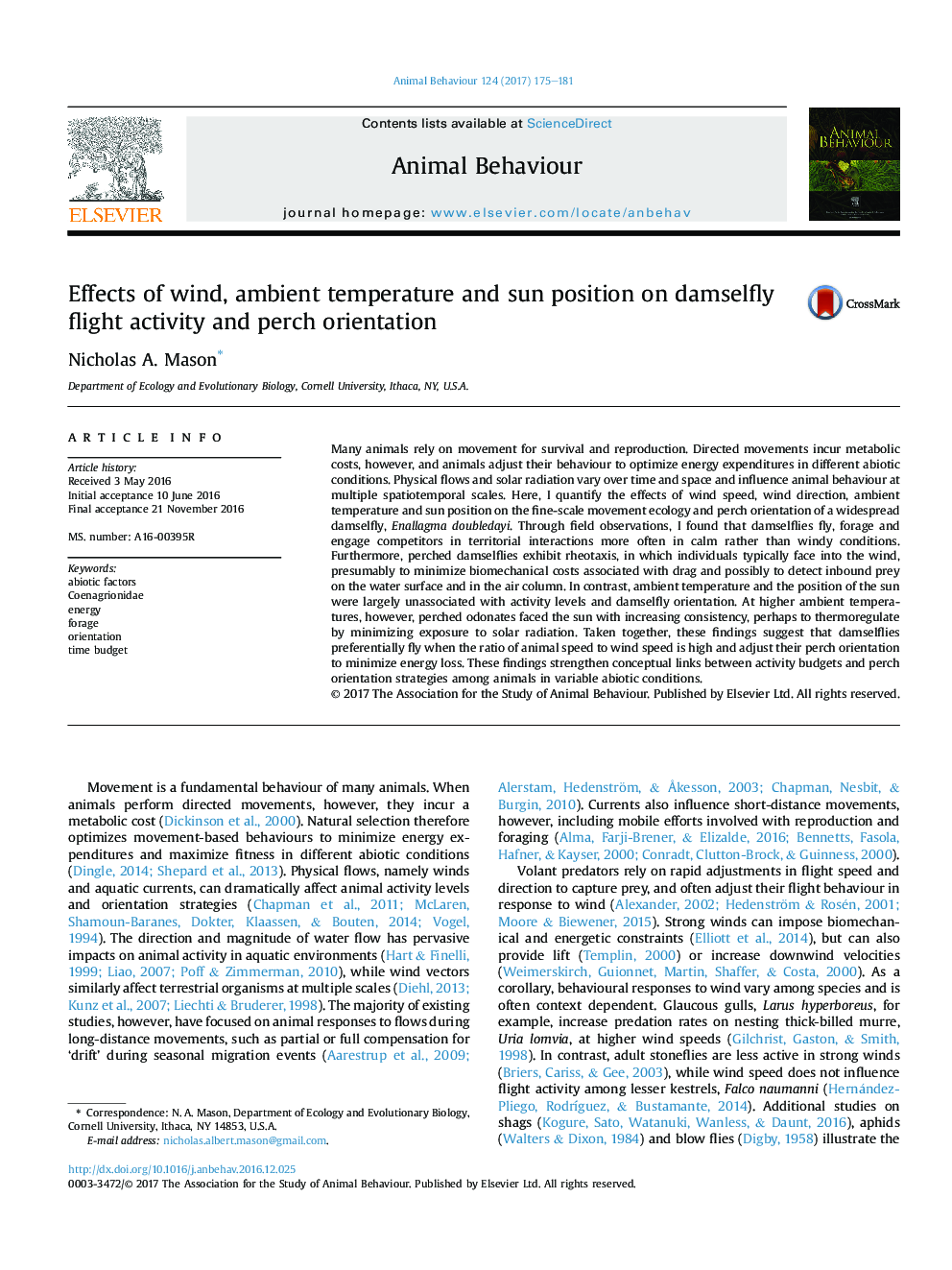| کد مقاله | کد نشریه | سال انتشار | مقاله انگلیسی | نسخه تمام متن |
|---|---|---|---|---|
| 5538638 | 1552204 | 2017 | 7 صفحه PDF | دانلود رایگان |
عنوان انگلیسی مقاله ISI
Effects of wind, ambient temperature and sun position on damselfly flight activity and perch orientation
ترجمه فارسی عنوان
تأثیر باد، دمای محیط و موقعیت خورشید بر فعالیت پرواز پروازی و گردش هواپیما
دانلود مقاله + سفارش ترجمه
دانلود مقاله ISI انگلیسی
رایگان برای ایرانیان
کلمات کلیدی
موضوعات مرتبط
علوم زیستی و بیوفناوری
علوم کشاورزی و بیولوژیک
علوم دامی و جانورشناسی
چکیده انگلیسی
Many animals rely on movement for survival and reproduction. Directed movements incur metabolic costs, however, and animals adjust their behaviour to optimize energy expenditures in different abiotic conditions. Physical flows and solar radiation vary over time and space and influence animal behaviour at multiple spatiotemporal scales. Here, I quantify the effects of wind speed, wind direction, ambient temperature and sun position on the fine-scale movement ecology and perch orientation of a widespread damselfly, Enallagma doubledayi. Through field observations, I found that damselflies fly, forage and engage competitors in territorial interactions more often in calm rather than windy conditions. Furthermore, perched damselflies exhibit rheotaxis, in which individuals typically face into the wind, presumably to minimize biomechanical costs associated with drag and possibly to detect inbound prey on the water surface and in the air column. In contrast, ambient temperature and the position of the sun were largely unassociated with activity levels and damselfly orientation. At higher ambient temperatures, however, perched odonates faced the sun with increasing consistency, perhaps to thermoregulate by minimizing exposure to solar radiation. Taken together, these findings suggest that damselflies preferentially fly when the ratio of animal speed to wind speed is high and adjust their perch orientation to minimize energy loss. These findings strengthen conceptual links between activity budgets and perch orientation strategies among animals in variable abiotic conditions.
ناشر
Database: Elsevier - ScienceDirect (ساینس دایرکت)
Journal: Animal Behaviour - Volume 124, February 2017, Pages 175-181
Journal: Animal Behaviour - Volume 124, February 2017, Pages 175-181
نویسندگان
Nicholas A. Mason,
